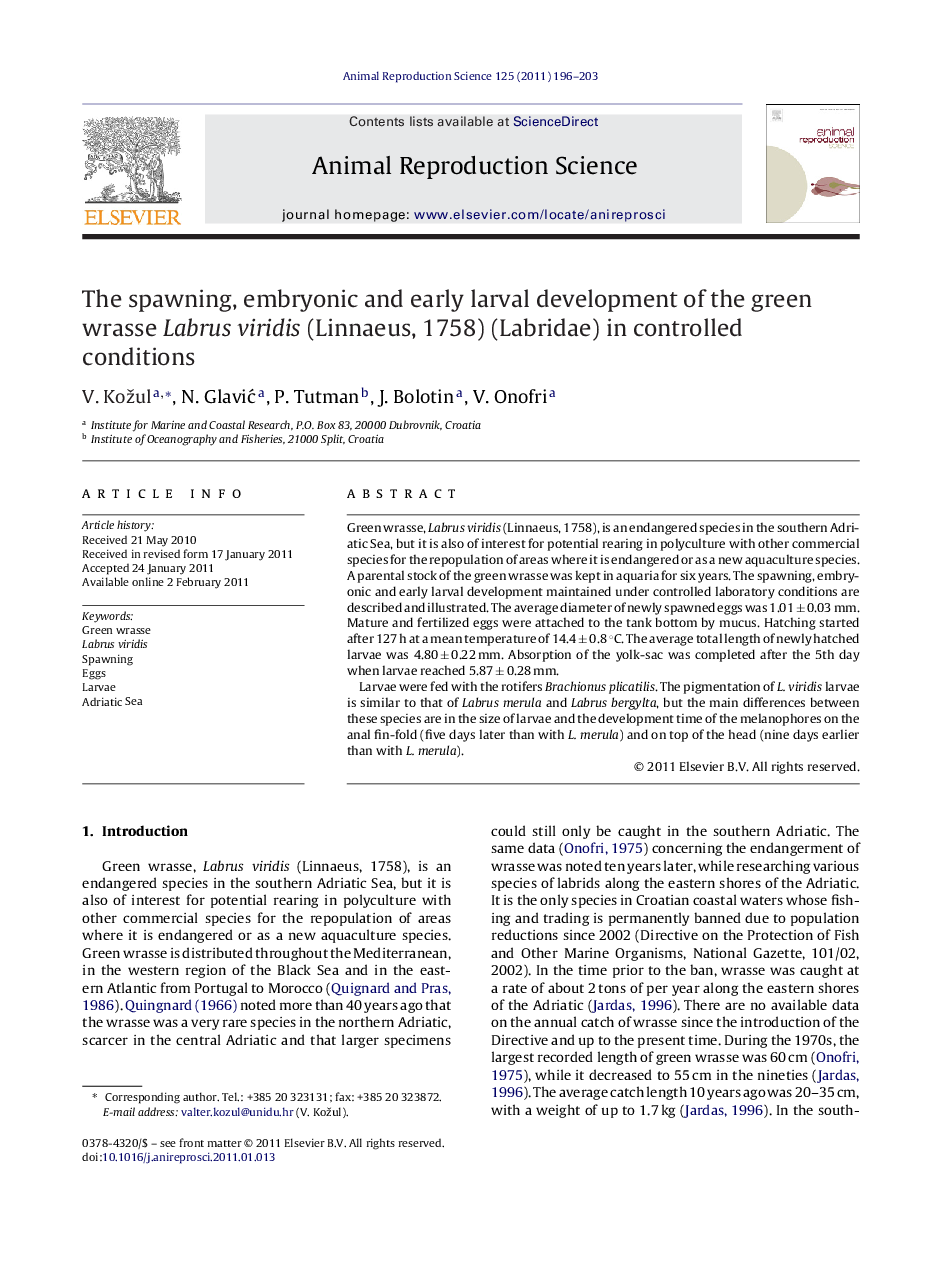| Article ID | Journal | Published Year | Pages | File Type |
|---|---|---|---|---|
| 2073455 | Animal Reproduction Science | 2011 | 8 Pages |
Green wrasse, Labrus viridis (Linnaeus, 1758), is an endangered species in the southern Adriatic Sea, but it is also of interest for potential rearing in polyculture with other commercial species for the repopulation of areas where it is endangered or as a new aquaculture species. A parental stock of the green wrasse was kept in aquaria for six years. The spawning, embryonic and early larval development maintained under controlled laboratory conditions are described and illustrated. The average diameter of newly spawned eggs was 1.01 ± 0.03 mm. Mature and fertilized eggs were attached to the tank bottom by mucus. Hatching started after 127 h at a mean temperature of 14.4 ± 0.8 °C. The average total length of newly hatched larvae was 4.80 ± 0.22 mm. Absorption of the yolk-sac was completed after the 5th day when larvae reached 5.87 ± 0.28 mm.Larvae were fed with the rotifers Brachionus plicatilis. The pigmentation of L. viridis larvae is similar to that of Labrus merula and Labrus bergylta, but the main differences between these species are in the size of larvae and the development time of the melanophores on the anal fin-fold (five days later than with L. merula) and on top of the head (nine days earlier than with L. merula).
